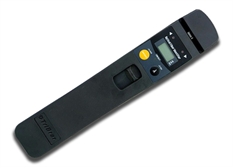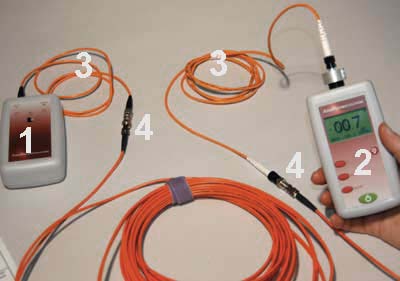Vital Functions to Search For in Optical Fibre Screening Equipment
When examining optical fibre screening devices, numerous vital features call for cautious consideration to ensure optimum efficiency and dependability. Compatibility with existing market standards enhances performance, while innovative measurement capabilities, consisting of TDR and OTDR screening, deal important insights into network honesty. Recognizing these attributes will shed light on how to pick the ideal devices for your specific requirements.
Accuracy and Precision
Precision and precision are vital specifications in the evaluation of optical fibre screening devices. These two characteristics ensure that measurements reflect the true efficiency of fiber optic systems, which is crucial for reliable network installation, maintenance, and troubleshooting. Accuracy describes the closeness of a determined worth to the real value, while accuracy denotes the repeatability of measurements under unchanged problems.
When picking optical fiber testing equipment, it is vital to consider instruments that provide high precision and precision to decrease mistakes in information analysis. Gadgets such as optical time-domain reflectometers (OTDRs) and power meters ought to have calibration systems to make certain constant efficiency with time. Additionally, the specifications supplied by suppliers need to information the tools's measurement unpredictability, which straight influences the integrity of test results.
Moreover, the efficiency of optical fiber screening tools can be affected by environmental elements, such as temperature and humidity. Choosing equipment designed to reduce these variables will improve measurement integrity. To conclude, investing in optical fiber screening devices with robust accuracy and accuracy attributes is essential for keeping optimum network efficiency and making sure the honesty of fiber optic interactions.

User-Friendly Interface
The effectiveness of optical fiber testing tools is not exclusively determined by its precision and precision; an user-friendly user interface plays a considerable role in boosting functional efficiency. A properly designed user interface streamlines the interaction between the professional and the devices, permitting a much more user-friendly understanding of intricate functions.
Secret attributes of an easy to use user interface include clear navigating food selections, rational layouts, and conveniently accessible controls. These aspects enable specialists to execute tests quickly without comprehensive training, minimizing the probability of customer mistake - ofda. Additionally, visual indicators such as progress bars, notifies, and visual depictions of information can considerably improve the customer experience by offering immediate feedback on the testing process.
In addition, customizable setups can additionally simplify procedures by enabling users to change specifications according to specific testing needs. This adaptability not only conserves time yet likewise guarantees that the equipment satisfies varied application requirements.
Integrating aid features, such as tooltips and thorough handbooks, into the user interface can further encourage users, promoting self-sufficiency and confidence in running the devices. Ultimately, an easy to use user interface is essential for making best use of the capacity of optical fiber testing tools, causing much more reliable and effective screening outcomes.
Transportability and Toughness
Transportability and toughness are important qualities of optical fibre testing devices, making certain that it can stand up to the roughness of numerous environments while continuing to be easy to transport. Professionals usually operate in varied setups, from telecoms centers to remote installations, making it essential that testing devices are light-weight and small (ofda). Tools made with mobility in mind usually includes ergonomic manages and instances that help with uncomplicated activity, therefore improving functional performance on-site
Resilience is similarly vital, as optical fibre screening equipment is often subjected to severe problems, consisting of temperature level fluctuations, moisture, and physical influences. Instruments built with tough products such as reinforced plastics or steel real estates are much better suited for these environments, decreasing the threat of damages throughout use and transportation. In addition, devices with water and dirt resistance ratings, such as IP rankings, guarantees dependable performance in difficult conditions.
Compatibility With Requirements
Making sure compatibility with market requirements is important for optical fibre screening devices, as it straight impacts the reliability and legitimacy helpful hints of examination results. Optical fibre networks undergo rigid performance requirements developed by different companies, consisting of the Telecoms Sector Association (TIA) and the International Electrotechnical Compensation (IEC) Evaluating tools needs to abide by these criteria to make certain that measurements correspond and comparable throughout various systems and environments.
When picking optical fiber testing tools, individuals should validate that the tool satisfies appropriate requirements essential to their specific application, such as those associated to depletion, data transfer, and crosstalk. Tools that is certified with well-known requirements not only helps in accomplishing exact results but also helps with interoperability among tools from various manufacturers.
In addition, compatibility with criteria makes sure that the equipment can be used in regulative compliance situations, which is critical for jobs in sectors such as telecommunications, aerospace, and military applications. Investing in optical fiber screening devices that straightens with present market criteria is a fundamental element of maintaining high quality assurance and accomplishing ideal network efficiency.
Advanced Dimension Capacities
Advanced dimension capacities are a specifying attribute of modern-day optical fiber screening equipment, permitting comprehensive analysis of network efficiency. These capacities guarantee that service technicians can examine essential criteria such as signal loss, diffusion, and data transfer, which are crucial for preserving optimal communication effectiveness.
One key element is the capability to carry out time-domain reflectometry (TDR) and optical time-domain reflectometry (OTDR) tests. These techniques enable users to recognize faults, determine the size of fibers, and figure out the area of flaws with exceptional precision - ofda. Moreover, advanced tools frequently includes the ability to gauge optical power levels, helping to analyze the general health of the network and ensure conformity with the required specifications.
Additionally, some testing gadgets supply innovative formulas for real-time analysis, allowing quicker medical diagnosis and troubleshooting. In final thought, spending in optical fiber screening equipment with advanced measurement try this site abilities is crucial for making certain network integrity and efficiency in today's requiring telecommunications landscape.
Conclusion
